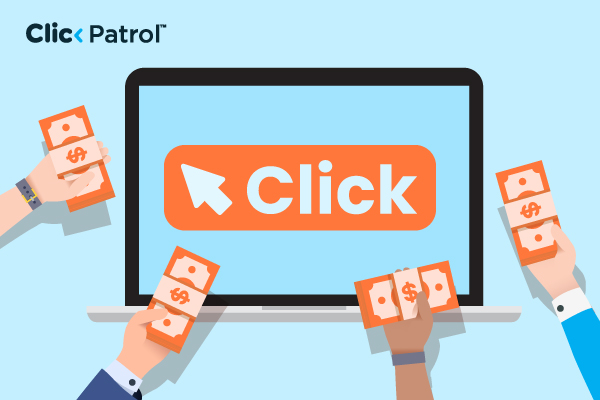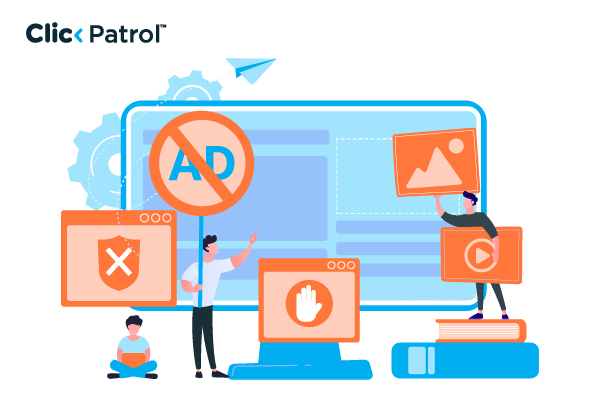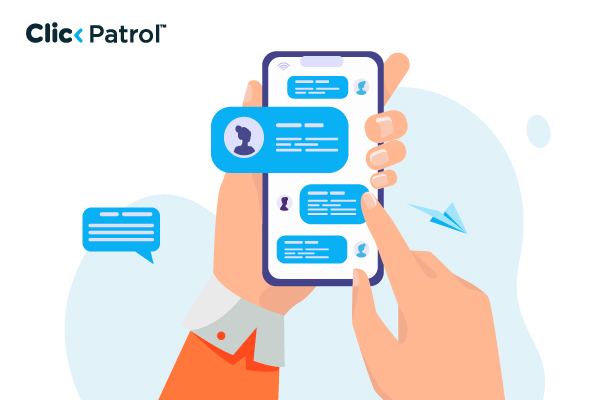During the holiday season advertisers raise bids and budgets, which creates richer targets for fraudsters, bots and abusive competitors. The surge in traffic also makes abnormal activity harder to spot manually, so fake clicks, repeated clicks and non human traffic can consume a larger share of spend before anyone notices.
How PPC Advertisers Can Avoid Scams and Fraud This Holiday Season
Abisola Tanzako | Nov 20, 2025

Holiday shopping brings a surge in online activity, and not just from real customers. As consumers hunt for deals, scammers and fraudsters take advantage of the volume spike across search, social and display. That pressure is now clearly visible in PPC data, with higher rates of fake clicks, bots and abusive behavior draining budgets before real buyers even reach your landing pages.
Table of Contents
- Holiday scams are rising on and off PPC platforms
- Why holiday click fraud hits PPC budgets harder
- Key holiday fraud risks for PPC advertisers
- How to avoid scams and ad fraud in your PPC traffic
- Why automated click fraud protection is critical during holidays
- What this means for holiday PPC performance
From our vantage point at ClickPatrol, the holiday period is consistently one of the riskiest moments for click fraud and invalid traffic across Google Ads, Meta Ads and Microsoft Ads. Advertisers raise bids, increase budgets and launch rapid tests, which also creates more opportunity for fake users, malicious scripts and competitors to waste spend.
Holiday scams are rising on and off PPC platforms
Consumer protection agencies and law enforcement typically report a spike in digital fraud complaints in November and December, covering fake stores, payment scams and identity theft. That same pattern plays out higher in the funnel in the form of suspicious ad traffic.
We see three broad fraud trends that intensify during the holidays:
- More bots and automated scripts targeting high intent keywords where advertisers push budgets.
- Competitive abuse where rivals repeatedly click ads to exhaust daily caps.
- Scam and phishing journeys where bad actors click ads only to redirect or harvest user data later.
Even when these activities do not directly steal money from consumers, they distort performance metrics and quietly move budget away from genuine shoppers.
Why holiday click fraud hits PPC budgets harder
Holiday campaigns usually combine higher CPCs, tighter windows and more aggressive targets. That amplifies the impact of every invalid click. In practice, we see:
- Faster budget depletion as bots and repeat clickers trigger spend earlier in the day, pushing real users into off-peak hours or out of auctions entirely.
- Misleading performance data where conversion rates drop and cost per acquisition rises, not because your offer is weaker, but because a bigger share of clicks comes from traffic that can never convert.
- Poor optimization decisions as algorithms are trained on noisy, inflated click volumes instead of clean, user based signals.
For brands that make a large share of their annual revenue in Q4, this extra waste and noise can materially change results.
Key holiday fraud risks for PPC advertisers
Based on recent holiday periods and current patterns we monitor, the highest risk areas for PPC budgets include:
- Brand and high intent keywords where CPCs rise sharply and any fraud has an outsized effect on spend.
- Remarketing and retargeting lists that can be polluted by bots or low quality users, driving repeated exposure to visitors who were never real in the first place.
- Third party placements and display inventory where invalid traffic rates are often higher and more variable than in core search results.
- Geographies with weak enforcement which can attract more automated abuse and low quality traffic sources.
Without dedicated detection, these risks usually surface as vague symptoms like “conversion drop since Black Friday” or “CPAs spiked after budget increase,” rather than being clearly identified as fraud or invalid traffic.
How to avoid scams and ad fraud in your PPC traffic
Holiday scam advice for consumers typically focuses on secure payments, trusted retailers and careful review of suspicious messages. For PPC professionals, the equivalent is to lock down your traffic sources and measurement so that only real potential customers can click on your ads and reach your site.
We recommend the following practical steps for Google Ads, Meta Ads and Microsoft Ads campaigns:
- Increase log and pattern review during high spend days such as Black Friday, Cyber Monday and late December peaks. Watch for traffic spikes from single IP addresses, unusual device mixes or short, repeated visits.
- Tighten geo and exclusion lists to remove locations, ISPs or placements that consistently deliver sessions with very low engagement and no conversions.
- Use frequency and session controls so that the same device or IP cannot click your ads excessively without being flagged and blocked.
- Separate brand protection campaigns with closer monitoring of competitors, proxies and anonymized traffic that repeatedly hits your highest value keywords.
- Track post click behavior like scroll depth, time on site, event triggers and navigation paths, not just the click count itself.
These measures reduce exposure, but they are hard to manage manually when spend and traffic both surge.
Why automated click fraud protection is critical during holidays
Manual IP exclusions and surface level filters inside ad platforms only catch a portion of real fraud. Attackers adapt quickly, spreading abuse across devices, user agents, VPNs and rotating addresses. To protect holiday budgets effectively, advertisers need technology that evaluates every click across multiple behavioral signals and reacts in real time.
ClickPatrol is built to do exactly that for performance marketers:
- Per click behavioral analysis that assesses each visit using many signals such as velocity, repetition, environment and engagement.
- Automatic blocking of fake, bot or abusive users directly in platforms like Google Ads, Meta Ads and Microsoft Ads, stopping repeat offenders from consuming more budget.
- Cleaner traffic and analytics so your conversion rates, ROAS and attribution models reflect real users, not automated tools or malicious actors.
- Holiday surge readiness with monitoring that scales as you ramp budgets up and roll out new campaigns or experiments.
Advertisers can start a free trial of ClickPatrol ahead of peak days to benchmark current levels of invalid traffic, then keep protections active as spend increases.
What this means for holiday PPC performance
Holiday success is no longer just about creative and bidding strategy. With fraud and scams rising, the quality of your traffic is just as important as the volume. If 10 to 20 percent of your clicks are fake or low intent, your cost per acquisition and revenue forecasts for the season will be off from day one.
By treating click fraud and invalid traffic as a core performance risk rather than a side issue, you can:
- Preserve more budget for real shoppers who are ready to buy.
- Trust your metrics when deciding which campaigns to scale or pause.
- Protect remarketing lists and upper funnel tests from noisy, non human activity.
We expect fraud activity to remain elevated throughout the holiday period. Advertisers who act early with strong monitoring and automatic blocking will be better positioned to keep spend focused on genuine customers and enter the new year with reliable data and healthier account performance.
To reduce risk ahead of your next seasonal push, you can learn more about how ClickPatrol detects and blocks fake clicks in real time, or start a free trial to compare protected and unprotected traffic during your highest value weeks.
Frequently Asked Questions
-
Why does click fraud increase during the holiday season for PPC campaigns?
-
How can holiday click fraud impact my PPC budgets and performance?
Holiday click fraud drains budgets faster, especially on high intent and brand keywords where costs are highest. This leads to campaigns hitting daily caps earlier in the day, lower conversion rates, inflated cost per acquisition and skewed data that can cause you to pause good campaigns or scale the wrong ones.
-
What signals should I monitor to spot scams and invalid traffic in my campaigns?
You should watch for unusual spikes in clicks without matching conversions, repeated clicks from the same IP or device, very short site visits, abnormal ratios of new to returning users, and traffic clusters from locations or ISPs that do not align with your normal customer base. Consistent patterns across these signals are stronger indicators than any single metric alone.
-
How does ClickPatrol help protect my Google Ads, Meta Ads and Microsoft Ads during the holidays?
ClickPatrol analyzes every click using multiple behavioral signals to identify fake, automated or abusive activity, then automatically blocks those sources directly in your ad platforms. This stops repeat offenders from clicking your ads again, keeps more of your budget for real users and gives you cleaner data for optimization during peak season.
-
When should I enable click fraud protection for holiday campaigns?
It is best to enable click fraud protection before you ramp up holiday budgets, ideally at least a few weeks ahead of major peaks like Black Friday and late December. This allows tools such as ClickPatrol to benchmark normal behavior, catch early signs of abuse and keep protections active as you launch new ads and increase spend.






